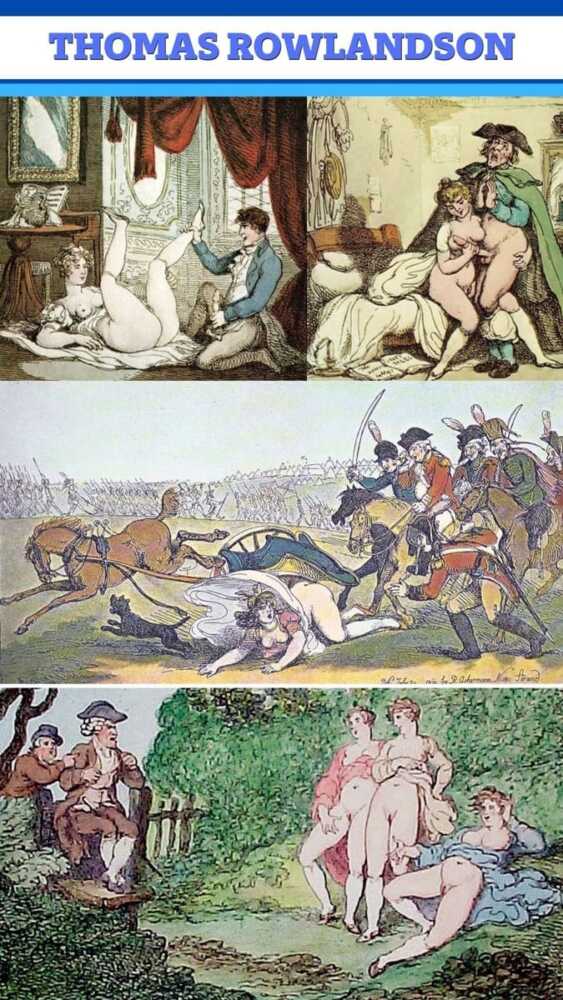
Thomas Rowlandson Erotic Draws
Thomas Rowlandson Erotic Prints:
Thomas Rowlandson (14 July 1756 – 22 April 1827) was an English artist and caricaturist.
Rowlandson was born in Old Jewry, in the City of London. He was the son of a tradesman or city merchant. On leaving school he became a student at the Royal Academy. At the age of 16, he lived and studied for a time in Paris, and later made frequent tours to the Continent, enriching his portfolios with numerous jottings of life and character. In 1775 he exhibited a drawing of Delilah visiting Samson in Prison, and in the following years he was represented by various portraits and landscapes. He was spoken of as a promising student; had he continued his early application he would have made his mark as a painter. But by the death of his aunt, a French lady, he inherited £7,000, plunged into the dissipations of the town and was known to sit at the gaming-table for 36 hours at a stretch
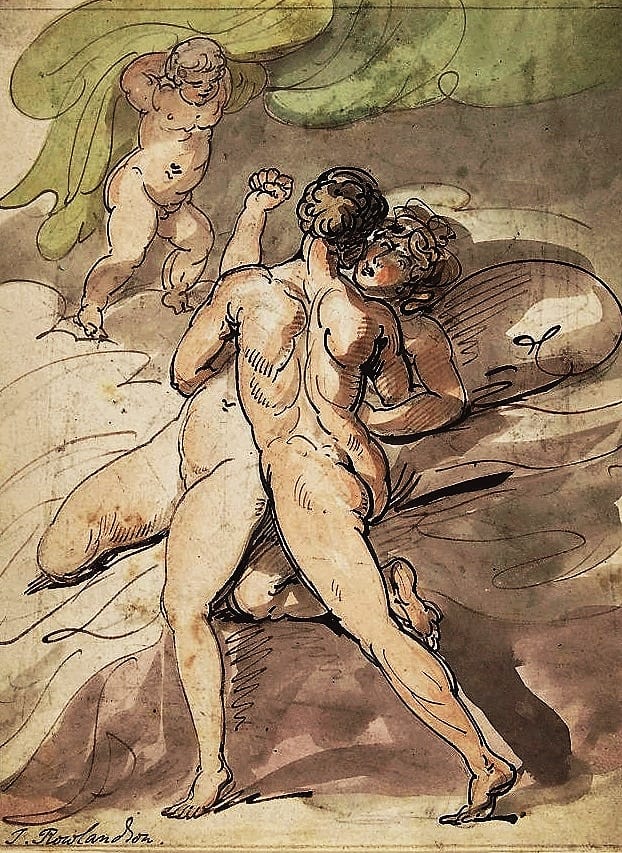
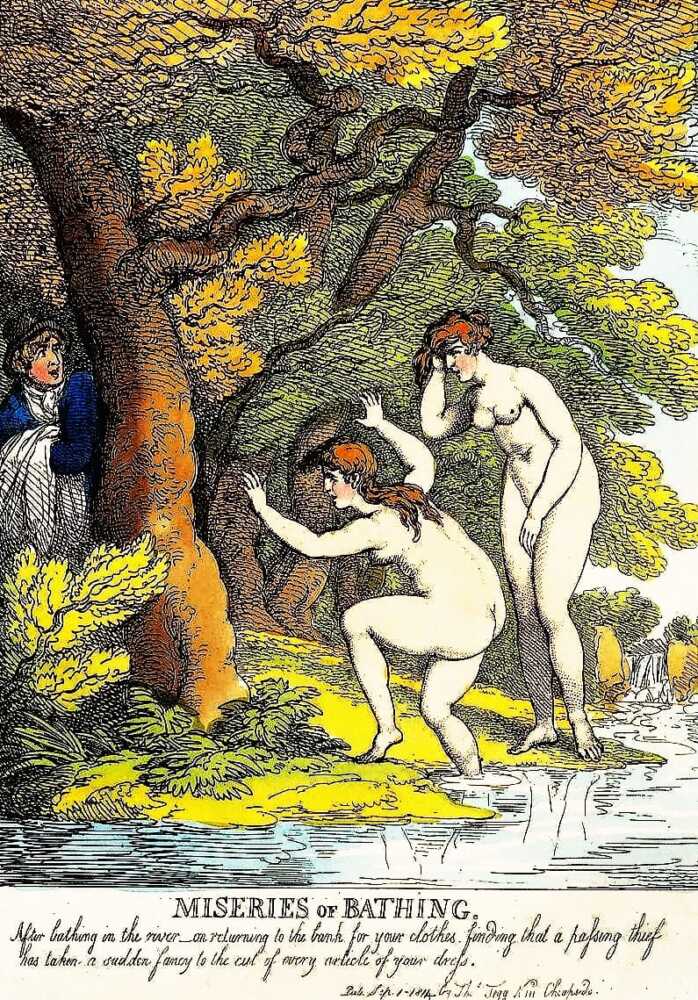
Rowlandson Teachers – Erotic art 18th century
In time poverty overtook him; and the friendship and examples of James Gillray and Henry William Bunbury seem to have suggested caricature as a means of filling an empty purse. His drawing of Vauxhall, shown in the Royal Academy exhibition of 1784, had been engraved by Pollard, and the print was a success. Rowlandson was largely employed by Rudolph Ackermann, the art publisher, who in 1809-issued in his Poetical Magazine The Schoolmaster’s Tour-a series of plates with illustrative verses by Dr. William Combe.
They were the most popular of the artist’s works. Again engraved by Rowlandson himself in 1812, and issued under the title of the Tour of Dr Syntax in Search of the Picturesque, they had attained a fifth edition by 1813, and were followed in 1820 by Dr Syntax in Search of Consolation, and in 1821 by the Third Tour of Dr Syntax in Search of a Wife.

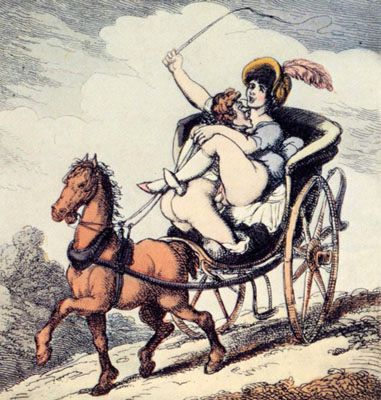
Body of erotic prints
He also produced a body of erotic prints and woodcuts, many of which may be considered pornographic by today’s standards.
The same collaboration of designer, author and publisher appeared in the English Dance of Death, issued in 1814-16, one of the most admirable of Rowlandson’s series, and in the Dance of Life, 1817. Rowlandson also illustrated Smollett, Goldsmith and Sterne, and his designs will be found in The Spirit of the Public Journals (1825), The English Spy (1825), and The Humourist (1831). He died in London, after a prolonged illness, on 22 April 1827.
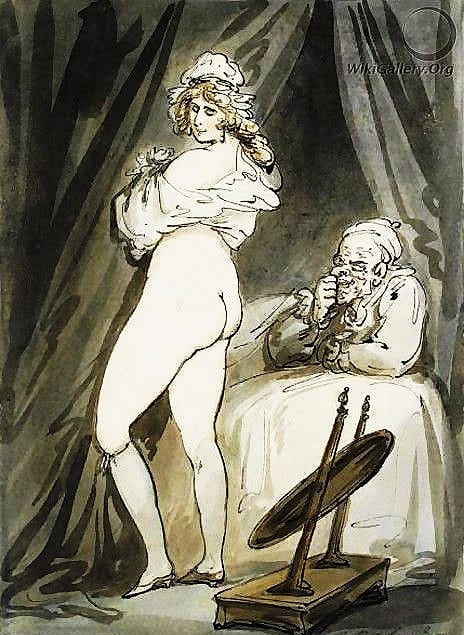
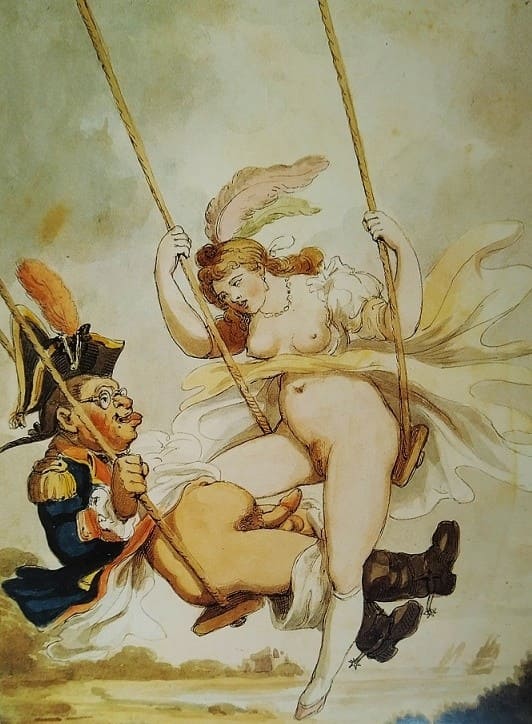
Rowlandson’s designs
Rowlandson’s designs were usually done in outline with the reed-pen, and delicately washed with colour. They were then etched by the artist on the copper, and afterwards aquatinted-usually by a professional engraver, the impressions being finally coloured by hand. As a designer he was characterized by the utmost facility and ease of draughtsmanship, and the quality of his art suffered from this haste and over-production. He dealt less frequently with politics than his fierce contemporary, Gillray, but commonly touching, in a rather gentle spirit, the various aspects and incidents of social life. His most artistic work is to be found among the more careful drawings of his earlier period; but even among the exaggerated caricature of his later time we find hints that this master of the humorous might have attained to the beautiful had he so willed.
His work included a personification of the United Kingdom named John Bull who was developed from about 1790 in conjunction with other British satirical artists such as Gillray and George Cruikshank.
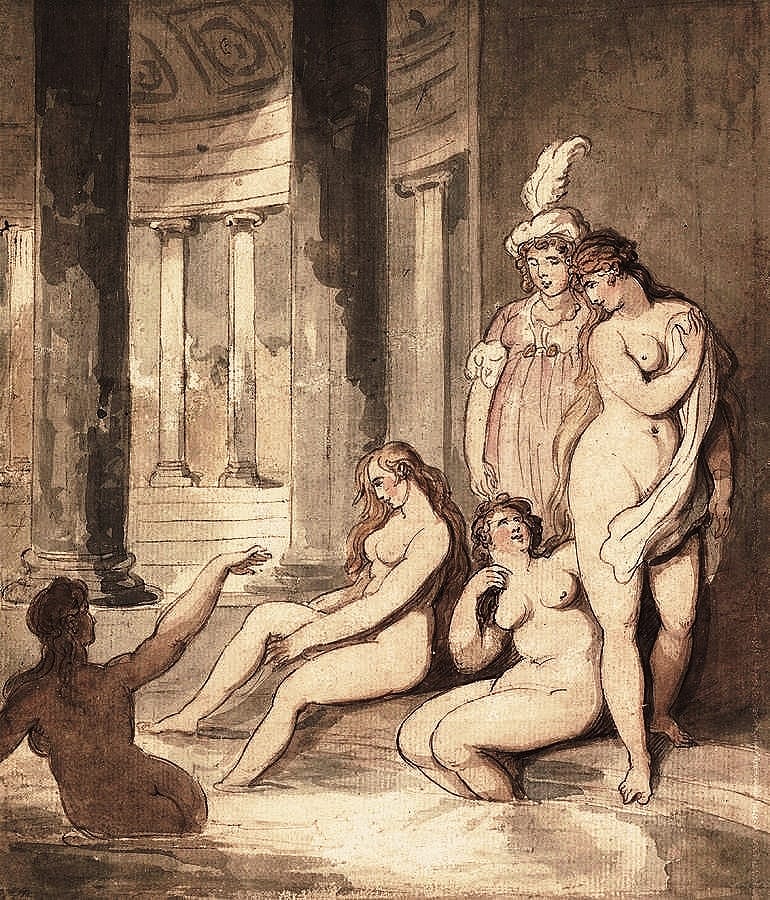 .
.
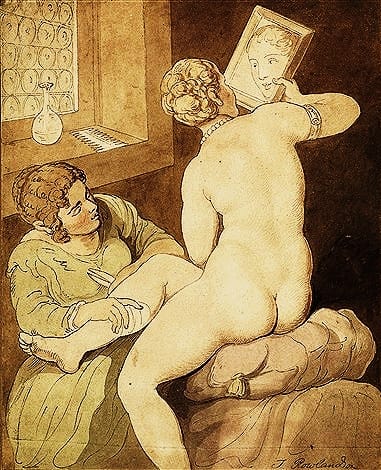 .
.
In 1776 he exhibited a drawing called Delilah visiting Samson in prison. His career as a painter was interrupted by a stroke of good luck as he received an inheritance of £ 7,000. He became so obsessed with card games that he lost all inheritance. It is said that he once sat playing for 36 hours straight

Thomas Rowlandson’s Bankrupt
Rowlandson was bankrupt and the need to earn money led to the production of satirical cartoons. Associated with the editor Rudolph Ackermann designed numerous illustrations, mostly humorous, that made him very popular.

His first great success was the series on The School Teacher (Dr. Syntax), a humorous narrative in verse written by William Combe. This character was unveiled in 1809 in a version illustrated by installments. The publisher Ackermann published in 1812 an improved version in book format, with 30 Rowlandson prints.
This first account (Dr. Syntax’s ‘tour’ in search of the picturesque) was followed by two sequels: Dr. Syntax in search of comfort (1820) and In search of a wife (1821). Both were produced in collaboration with the writer Combe and Rowlandson.
Erotic Illustrations Almost Pornographic
The artist approached political criticism as Hogarth had done but the greatest success is his erotic illustrations, so explicit that they are described as like almost pornographic.
In 1814-16 he created a humorous and updated version (English, according to its title) of the Dance of Death, a theme of medieval origin that had become popular in the sixteenth century by various recorded series such as that of Hans Holbein the Younger.
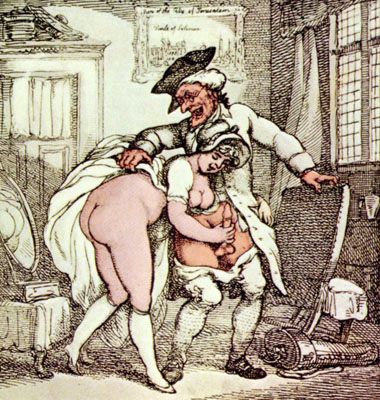
Haunted by his continued financial straits, Rowlandson continued to design numerous illustrations, with ever-decreasing quality.Unlike most nineteenth-century European illustrators, he used to personally engrave his plates. Rowlandson etched the main lines, and other specialized engravers added touches to the aquatint.Once stamped, the sheets were hand-colored, with many variations of tones but respecting the guidelines set by Rowlandson and the editor.
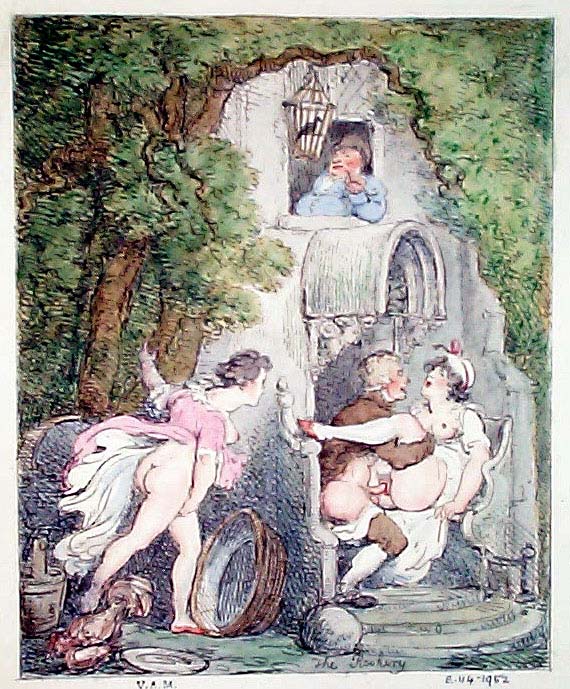
There are many Rowlandson prints around the world. One of the most extensive (almost 2,500 engravings) is on display at the MET in New York
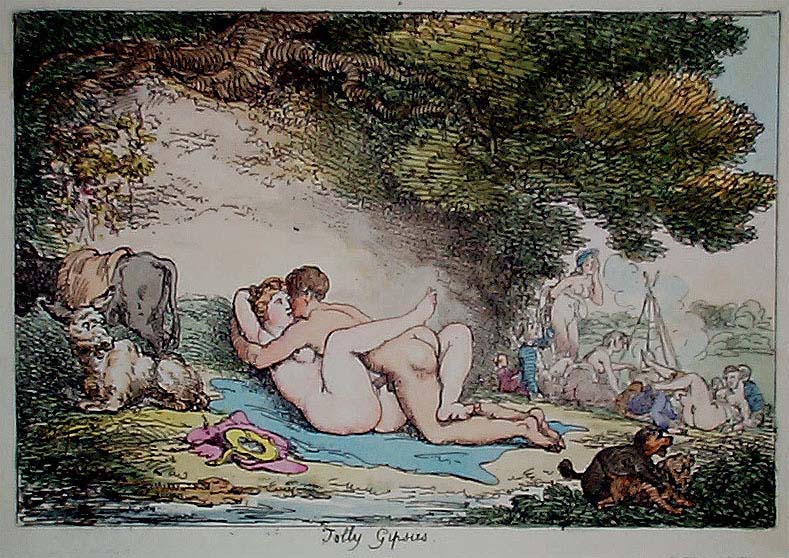
Rowlandson died at his house in London on 21 April 1827. He was buried at St Paul’s, Covent Garden on 28 April 1827 aged 70 years.


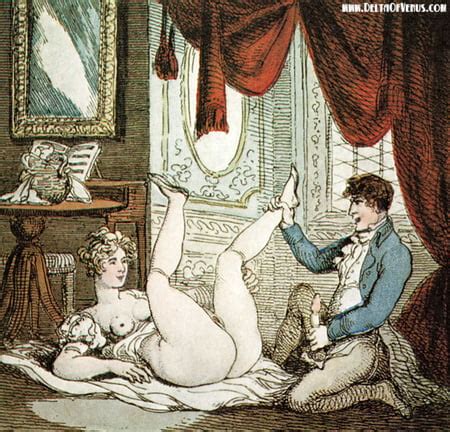
Related Post
- Louvre Museum
- Louis David MET NYC
- Versailles Palace On line Tour
- Thomas Rowlandson MET On Line
- Amazon Vintage prints
- TSA Relulations Liquids







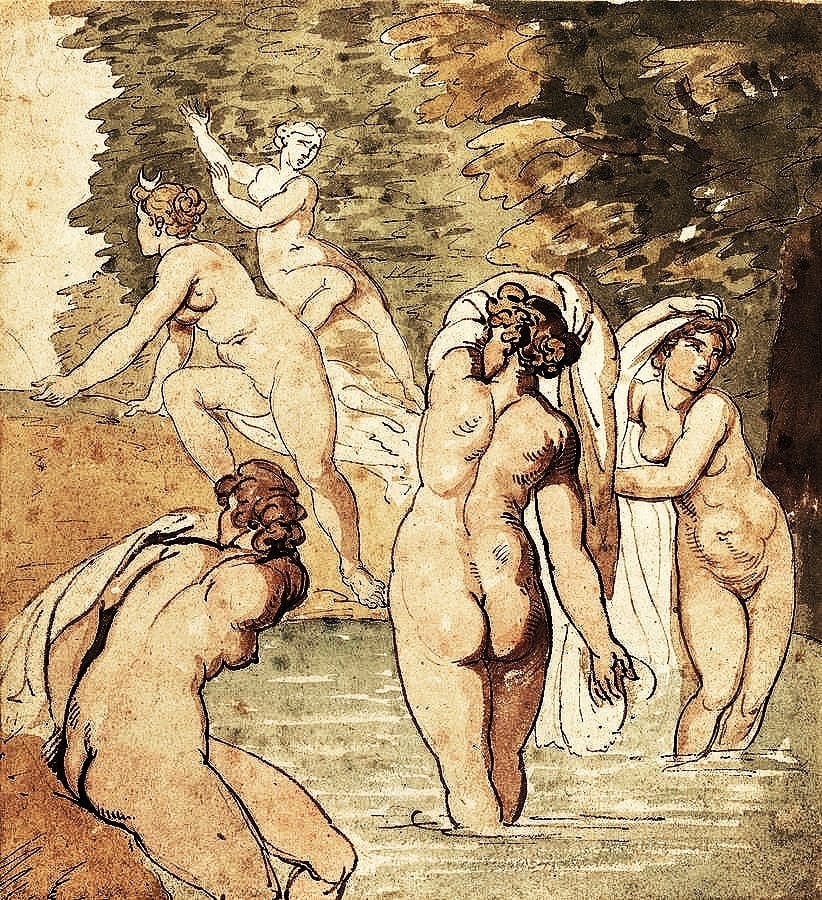

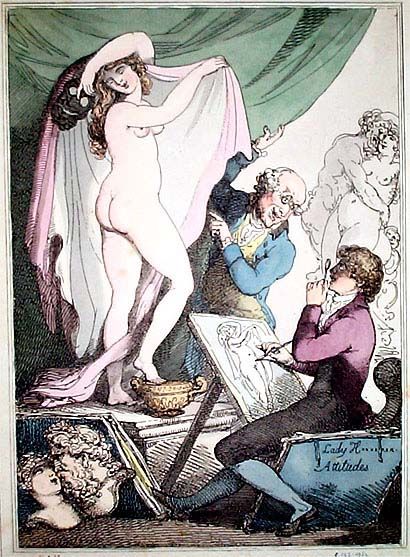



J’aimes beaucoup